Top 27 Large Indoor Cactus
Cacti are popular plants to care for due to their unique physical characteristics. They are great to grow indoors, especially in your home or office. Many experts consider cacti as great plants that help improve concentration and get rid of bad vibes.
These plants provide you with a more natural and relaxing environment. There is a great variety of types of indoor cactus and, therefore, I have made a list of different indoor types already common and others that you might not even previously have heard about!
Stay tuned and discover more than 20 types of large indoor cactuses and learn how to take care of these plants.
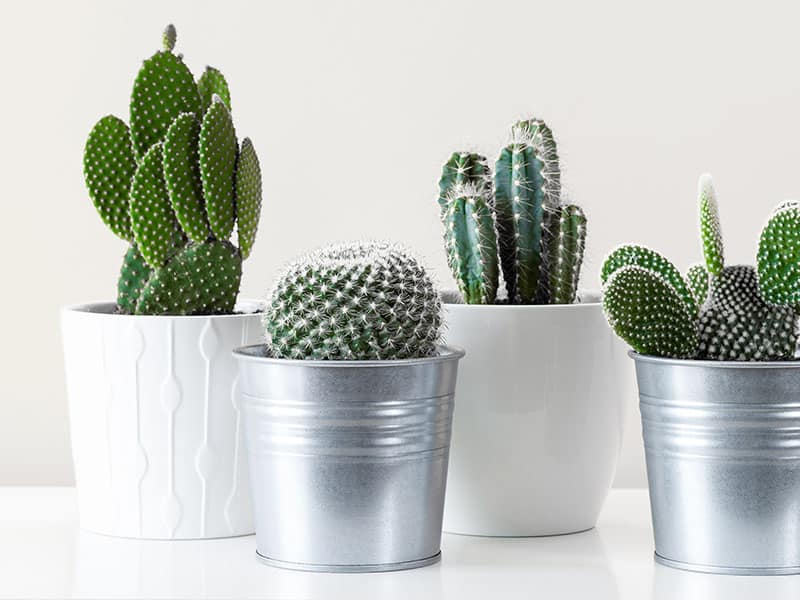
The Most Popular Large Indoor Cactuses
There are so many large indoor cactuses to choose from to make your home a cozy place where your self-paced learning will be more efficient. If you prefer plants with unique physical characteristics, here is a list to consider!
#1 Bishop’s Cap Cactus (Astrophytum Myriostigma)
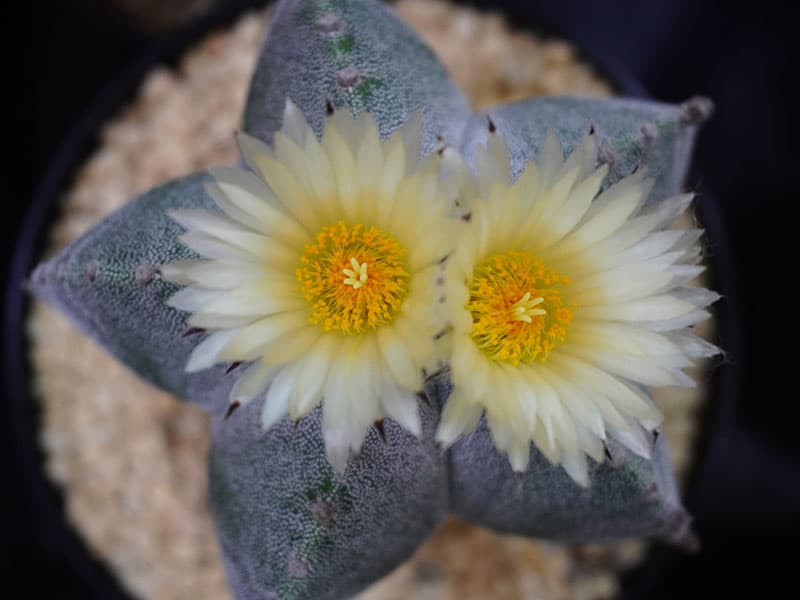
Bishop’s Cap is one of the most beautiful and decorative types of large indoor cactuses ever. Therefore, it’s one of the most appreciated by cacti lovers. It is one of the most spineless and straightforward cacti, with beautiful cactus flowers. It usually has between one and six flowers in spring and summer.
Although Bishop’s Cap is pretty easy to maintain, you should give it a lot of light to grow properly and healthy. I also advise you to put in a brighter room directly exposed to the sun during the summer season.
Usually, it is recommended to maintain it at more than 20 ºC during the day and above ten ºC at night. Don’t overwater it if you don’t want your cactus to rot. Check these tips on how to grow a healthy cactus!
#2 Dwarf Chin Cactus ( Gymnocalycium Baldianum)
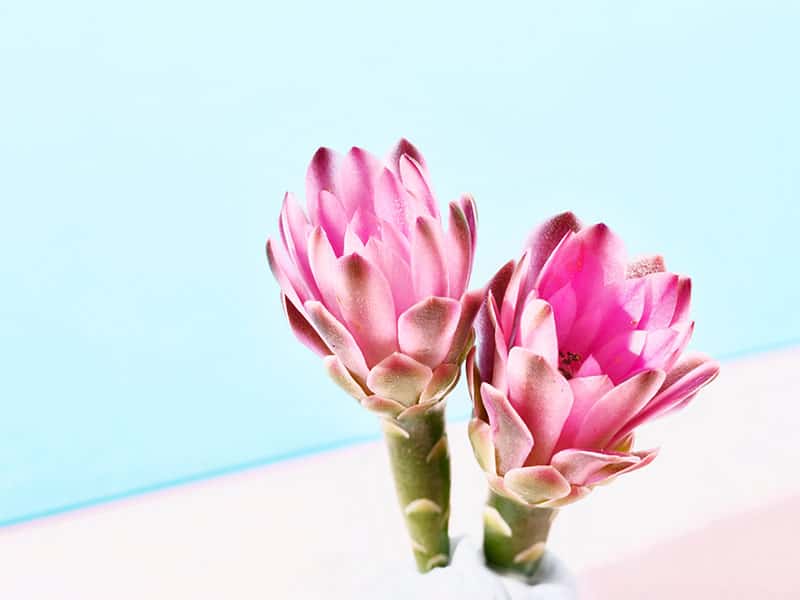
Dwarf Chin Cactus is another type of indoor cacti with origin from South America. Although cactus experts advise it to be grown indoors, you can also grow it in pots to have it indoors. Just make sure you meet its growth needs.
This type of indoor cactus has beautiful flowers such as purple, pink, and red. They open up in summer and the most important thing – you can take seeds from their fruits!
Chin Cactus requires partial sun exposure in semi-shade places. If you want it indoors, put it in a brighter room, but don’t expose it to sunlight. They also require acidic soils, and I recommend you prepare a coarse sand mixture, peat, and vegetable soil. Learn extra tricks on how to take care of your Chin Cactus!
Experts explain how to harvest seeds from Gymnocalycium Baldianum.
#3 The Giant Cactus (Carnegiea Gigantea)
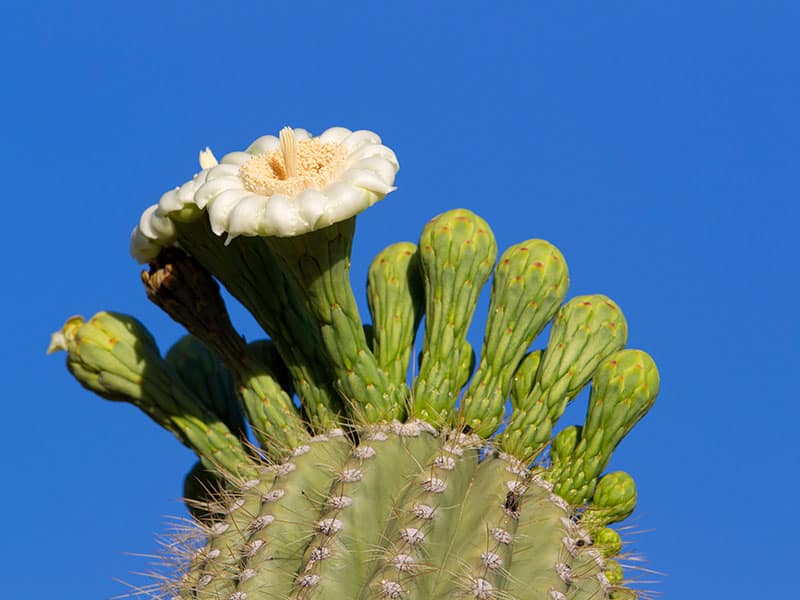
The origin of the Giant Cactus is from Mexico. This type of indoor cactus requires a lot of light. However, you can grow it indoors in bright rooms and cultivate it in a larger pot than normal ones.
This cactus is considered very beneficial for people’s health. The best thing is that it is pretty resistant, and it’s not complicated for growing it. However, make sure you don’t water it during rainy and cold winters if you don’t want it to rot.
Water it whenever the soil is dry to several cm deep, which you can check by sinking your fingers into the ground or with a wooden stick. Learn how to properly grow your Giant Cactus!
#4 Candelabra Cactus (Euphorbia ingens)
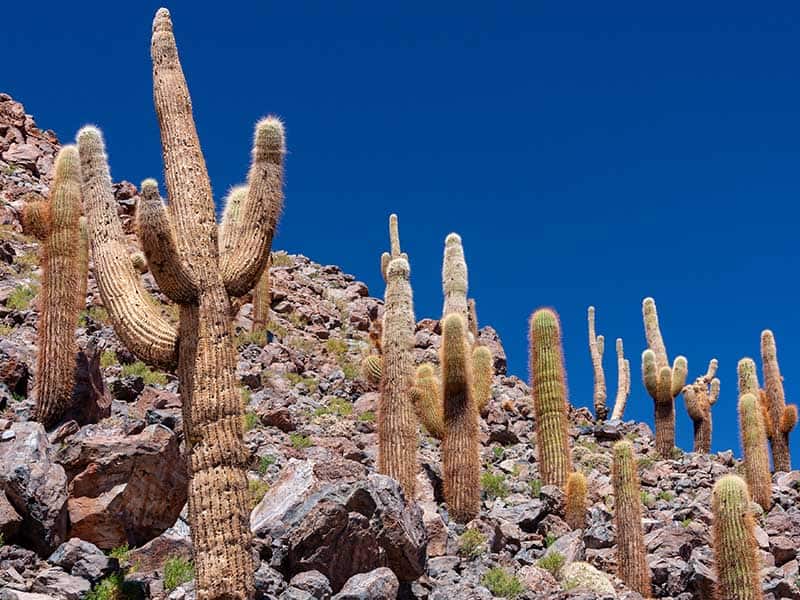
I can highlight the Euphorbia ingens, also known as candelabra tree or candelabra cactus, whose name is adopted for its unique form. Even though this plant wants a warm climate for growing, it can also adapt to indoor and outdoor conditions.
Candelabra Cactus doesn’t require much water, but during summer and spring seasons needs a lot of water to grow properly. Also, the plant itself requires a lot of space if you want it to grow more in height.
If you’re planning to grow it outside in your garden, keep in mind that it can even reach a height of 15 meters. Find out how to grow your Candelabra tree indoors!
#5 Christmas Cactus (Schlumbergera)
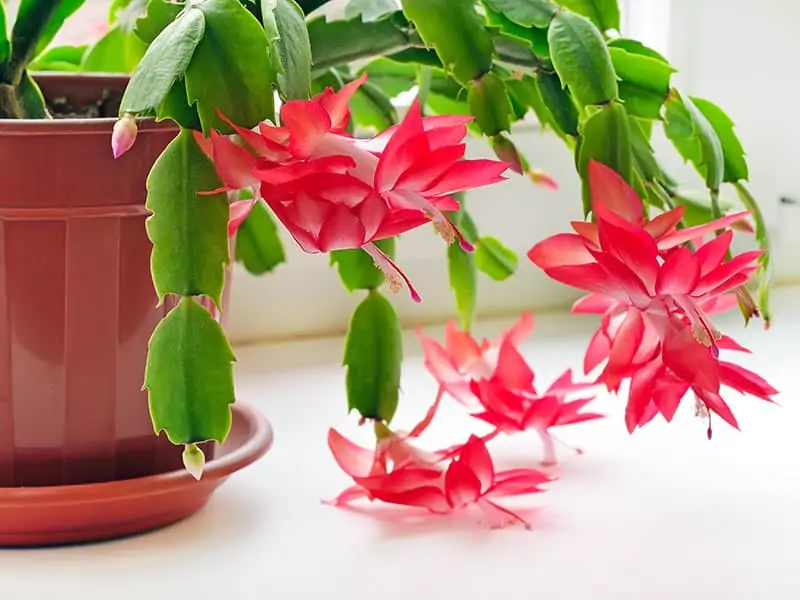
The most beautiful and striking plant is the Christmas Cactus that originates from Brazil. This type of cactus has seven species depending on the tropical zone’s climate and can also be grown indoors.
The most important thing is to keep the Christmas Cactus at a temperature between 16 and 21 ºC, in very bright places, and exposed to direct sun. Also, the plant wants plenty of watering. On the other hand, when the cold season arrives, you can even leave it longer without watering.
Shlumbergera’s flowers can be white, red, yellow, pink, orange, etc., depending on its mutations. If you want to have a healthy one in your home, take note of these gardening guides!
#6 The Peruvian Apple Cactus (Cereus Peruvianus)
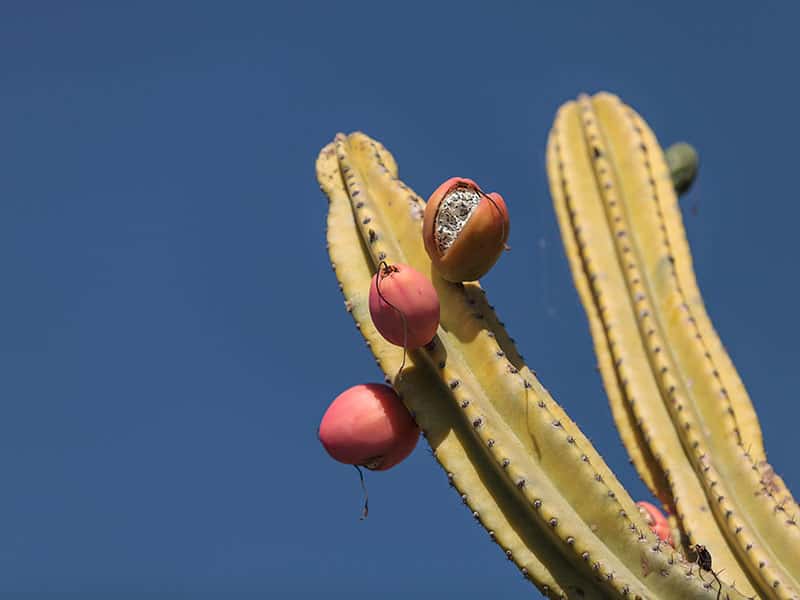
The Peruvian Apple Cactus or Cereus peruvianus originates from Uruguay, Brazil, and Argentina. This cactus can reach ten meters in height due to its fast-growing plant. This particular species has a green hue that can go bluish.
Many cacti lovers named this plant “computer cactus,” not only because it perfectly fits as a decorative plant on the computer desk but also because it is well-known for its ability to absorb the computer’s electromagnetic radiation.
Cereus Peruvianus requires a lot of sun and brightness to grow appropriately. It is recommended to put it next to the window and avoid exposing it to low temperatures below 7.
If you grow your indoor Peruvian on your computer desk, make sure you later put it longer on the brighter side of your room to absorb enough light. Learn extra tricks for growing an Apple Cactus!
#7 Cristata (Euphorbia Lactea)
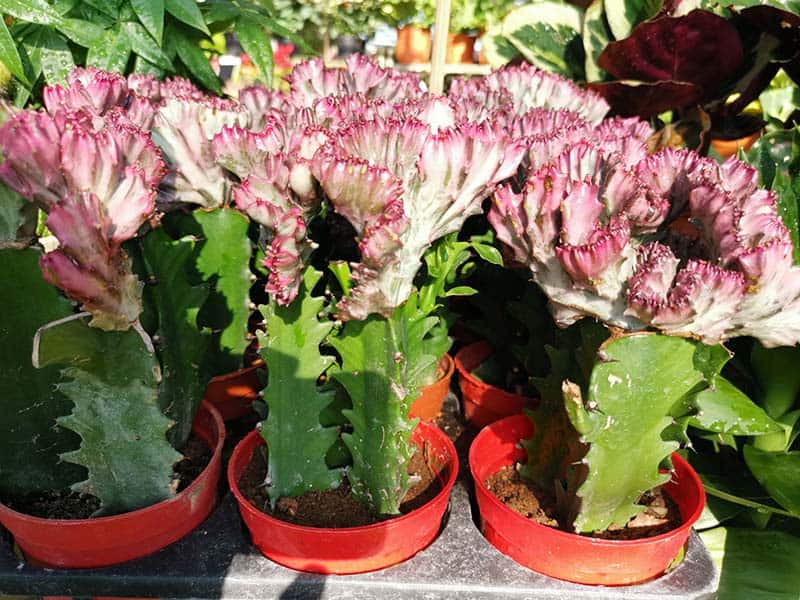
Euphorbia Lactea, more commonly called crested cacti, is a cactus with black spines. Its crested and wavy green stems with yellowish spots, violets, or roses are curious and ornamental. It grows pretty slow and requires easy cultivation!
Cristata enjoys bright areas, and it’s perfect for your home. I recommend you put it next to your window to ensure that it is receiving enough light. Avoid exposing it to direct sun during warm hours in summer.
During summer days, water the plant every ten days for the sake of proper caring. Check this guide for learning all the tricks!
#8 Zebra Plant (Haworthia Fasciata)
The Zebra Plant or Haworthia Fasciata is an ideal indoor cactus due to its unique appearance and ease of growing. The cactus obtains dark green leaves that make it perfect for indoor decoration.
Make sure you grow this plant in a vivarium or other small pot if you want it indoors. Avoid putting it in the direct sun and water it every 15 days during summer. The Zebra Plant doesn’t require a low temperature below ten ºC. Discover how to grow a Zebra cactus indoors!
#9 Peyote Cactus (Lophophora Williamsii)
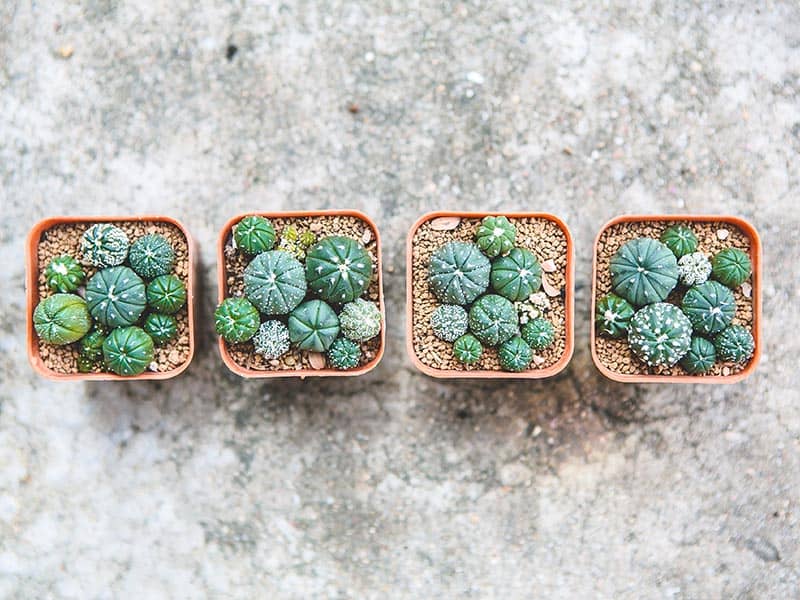
Lophophora Williamsii or Peyote Cactus is one of the most popular and recognized Mexican cacti due to its peculiar round shape. It doesn’t grow higher than 13 centimeters, and it’s perfect for indoor areas.
Many people claim that Peyote Cactus is perfect for medicinal and indoor decorative purposes.
Its cultivation is not difficult, but it’s essential to know that this plant requires total sun exposure and high temperatures. Learn how to take care of a peyote cactus!
#10 San Pedro Cactus (Echinopsis Pachanoi)
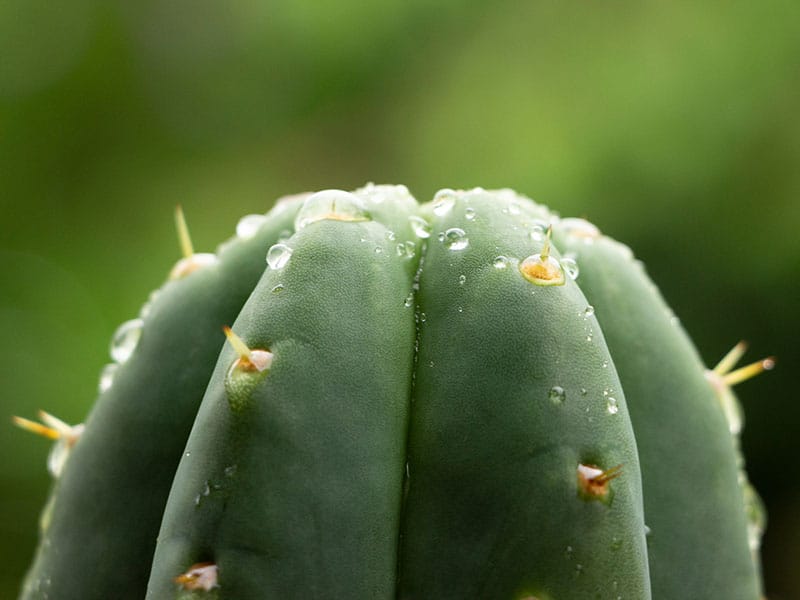
Echinopsis Pachanoi or San Pedro Cactus originates from the Andean mountain. It’s a plant that is easy to grow, and it can reach a height of 1,000 to 3,000 meters. The San Pedro cactus is well-known for its use in medicine and veterinary.
However, like any plant, it requires specific care to grow correctly. It is essential to properly water it so it can grow to a beautiful plant. If you already plan to have one Echinopsis pachanoi, find out how to take care of it!
#11 Lithops (Cactus Piedra)
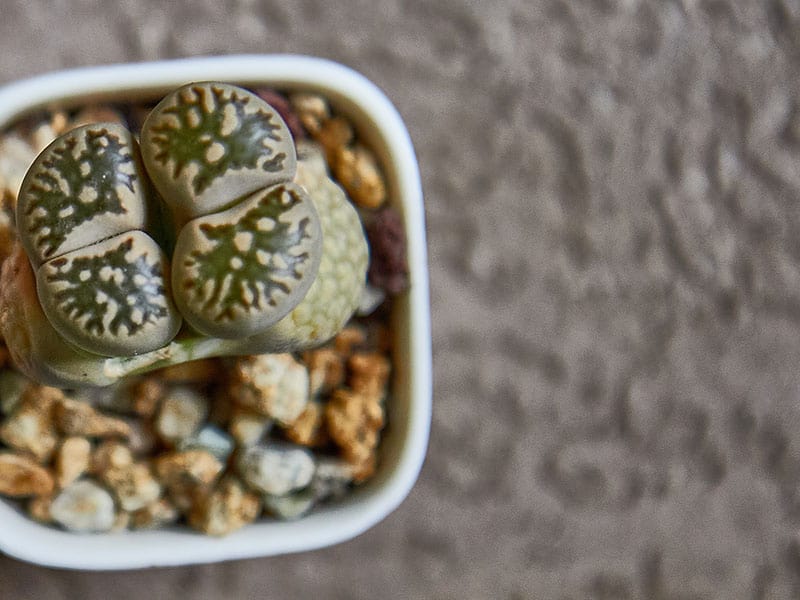
Cactus Piedra or Lithops is one of the simplest cactus plants to take care of. It’s striking and beautiful and makes our home look splendid. It originates from southern Africa, but it is also available worldwide.
Although Lithops is quite an easy plant to take care of and grow, I recommend you consider a few particular tips to grow your cactus healthier and robust. Learn all the tips of growing Cactus Piedra!
Experts explain how to keep your Cactus Piedra alive.
#12 Thimble Cactus (Mammillaria Gracilis)
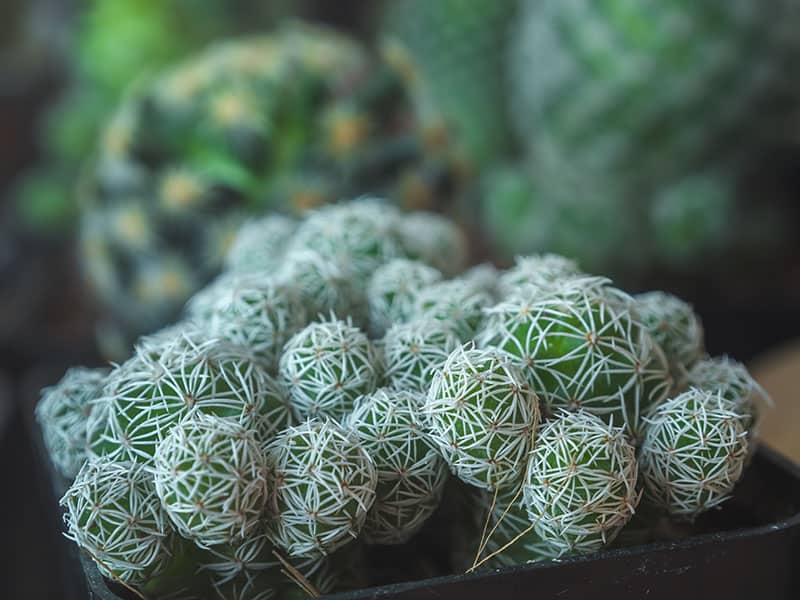
The Mammillaria Gracilis or Thimble Cactus is a plant that originates from Mexico and Central America in general. It usually grows six cm in height with proper growing and caring. The flowers of Thimble Cactus are small and light yellow.
The union between the cladodes is highly fragile and disassembles at the slightest touch. Thus it is essential to be very careful when handling the plant, avoiding touching the cladodes. It produces small light yellow flowers in Summer and Autumn. Follow this link to discover how to take care of your Thimble Cactus properly!
#13 The Glaucous Barrel Cactus (Ferocactus Glaucescens)
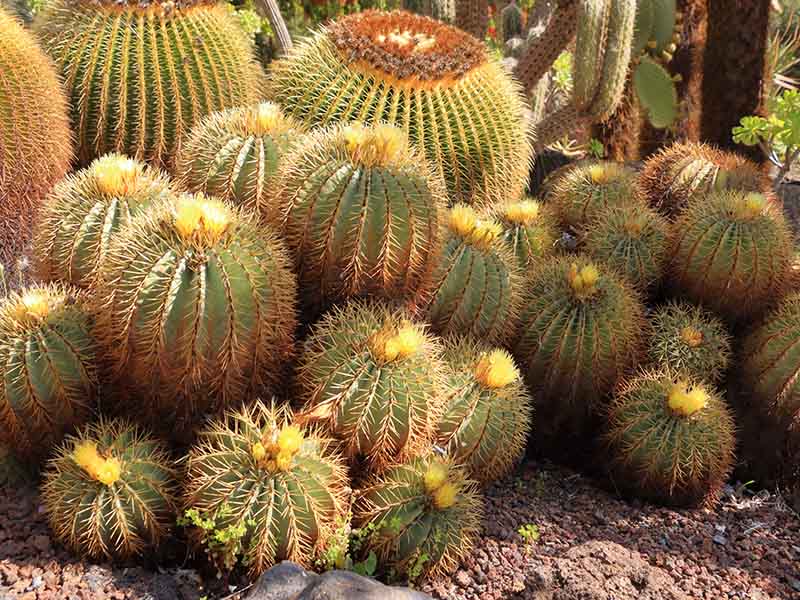
The Ferocactus Glaucescens is an outstanding plant due to its prickly thorns that have a typical barrel shape. The thorns can make whitish fruits that have an unusual appearance.
It originates from Guanajuato, San Luis Potosí, Mexico, but it is also available in many shops worldwide. The Glaucous Barrel Cactus can reach between 500 and 2300 meters in height. Learn how to grow Barrel Cactus indoors!
#14 False Peyote (Lophophora Fricii)
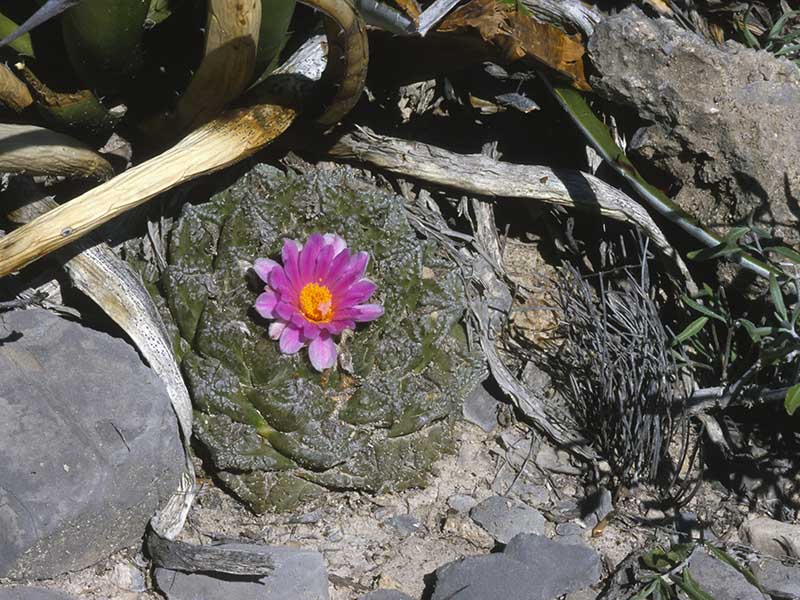
Lophophora Fricii is a pretty recognizable plant because it is rounded and looks like a button! It can reach 13 centimeters in height, so it’s pretty perfect for your home. It originates from Mexico, and the most important thing is – it is health beneficial.
Many people love this plant because it’s perfect for indoor decoration as well as every garden. You won’t have difficulty growing False Peyote, but I recommend you to search for growing and caring tips because it doesn’t grow so fast and has few requirements. Learn more about False Peyote care and growth!
#15 Easter Lily Cactus (Ariocarpus Fissuratus)
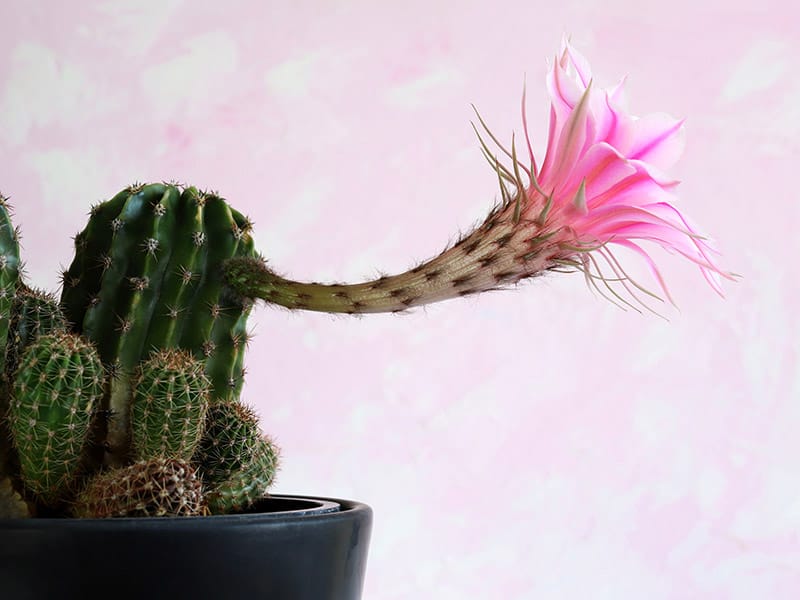
Easter Lily Cactus originates from Argentina. It can only reach 30 centimeters in height, and it is one of the most popular types of cactuses due to looking wonderful and serves as decorating indoors.
It has a giant flower of 12 centimeters in diameter. Easter Lily can have both – pink and white flowers. Not only does it give a beautiful color to your room, but it also refreshes your garden. It’s not difficult to care for and grow it properly, but I recommend you search for a regular pot to plant it.
Also, ensure the pot’s material is breathable ( in this case, you can have a ceramic pot) in order for the cactus to have trouble-free growth. Follow these tips on how to grow a healthy Lily!
#16 Jade Plant (Crassula Ovata)
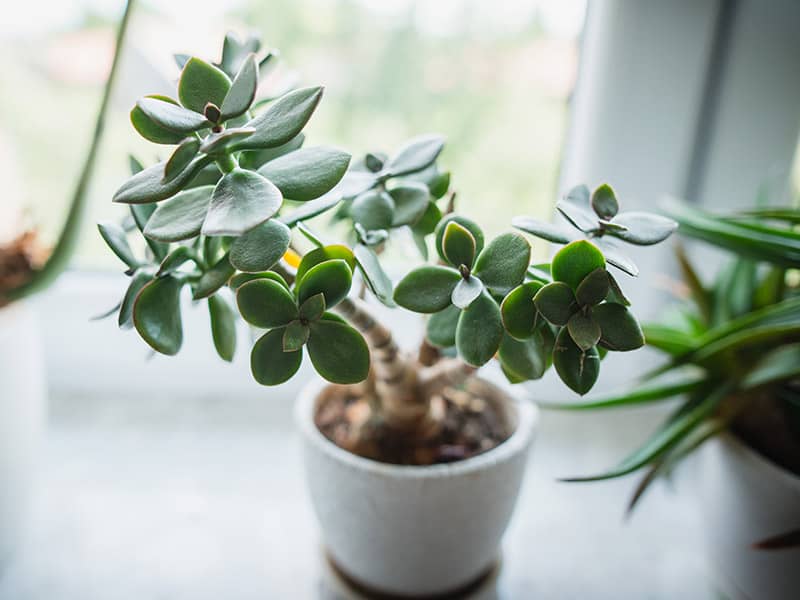
Crassula Ovata or Jade Plant originates from Southern Africa, but it can also be found worldwide. The Jade Plant has a strong stem that, within growing, obtains woody and jade green leaves. On the other hand, if it receives a lot of light, its tip can become rosy.
If you want to have it indoors, you should know that it requires a lot of bright rooms. By receiving enough light, the succulent will turn red. Learn how to grow a Jade Plant!
Experts explain what to do when your Jade’s leaves are falling.
#17 Cooper’s Haworthia ( Haworthia Cooperi)
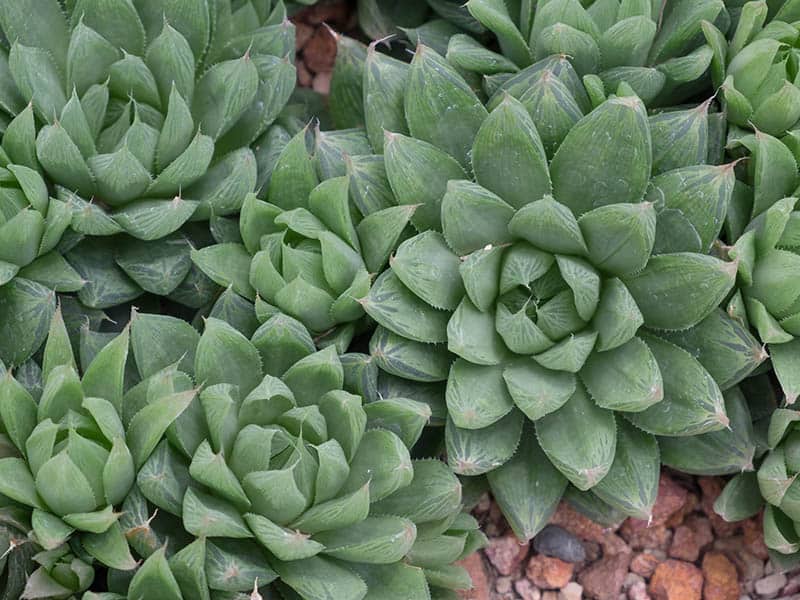
Cooper’s Haworthia or Haworthia Cooperi is a cactus plant with bluish-green leaves that form a rosette. This cactus produces white flowers in summer up to 30 cm long. It requires simple care, and it can grow anywhere.
Cooper’s Haworthia plants tolerate dry and hot places, and even low temperatures that are not below zero, as frost can be dreadful to them. Read on more for cultivation and care!
#18 The Indian Fig (Opuntia Ficus)
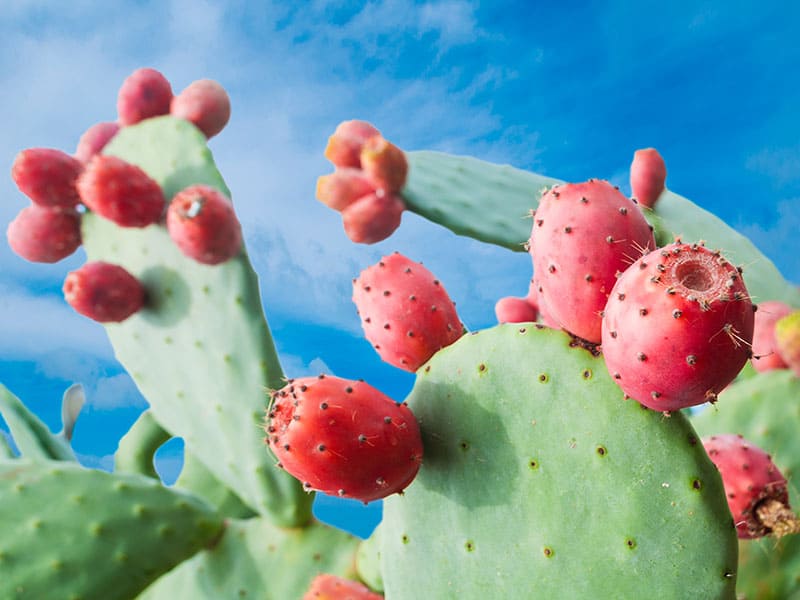
If there is a type of cactus that is really resistant to drought, then it is the Indian Fig. This cactus has pretty bright colors and delicious fruits for sure! It can grow quite quickly even if the climate is dry and the soil has few nutrients.
This type of large indoor cactus can reach an approximate height of 5 meters. Yet, if it’s adequately grown inside, it definitely won’t get this height! Check how to grow an Indian Fig!
#19 Candelabra Aloe (Aloe Arborescens)
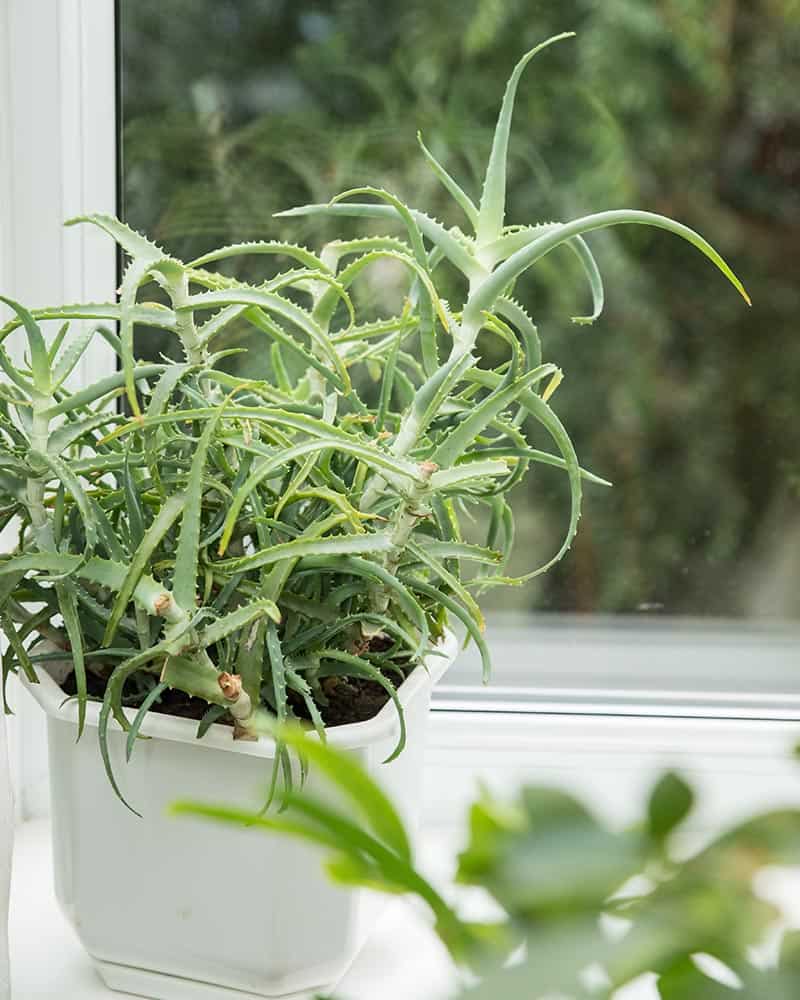
Aloe Arborescens or also known as the Candelabra Aloe is a species of South African origin belonging to the family of the Liliaceae located in the islands. Amongst the three species, Candelabra Aloe is considered as a widely popular plant worldwide.
The leaves, like all aloes, are glaucous green, lanceolate, fleshy, and with teeth on the edges. If you properly care for Aloe Arbirescens, it can live for years!
Check everything you need to know about Candelabra growing!
#20 White Mexican Rose (Echeveria Elegans)
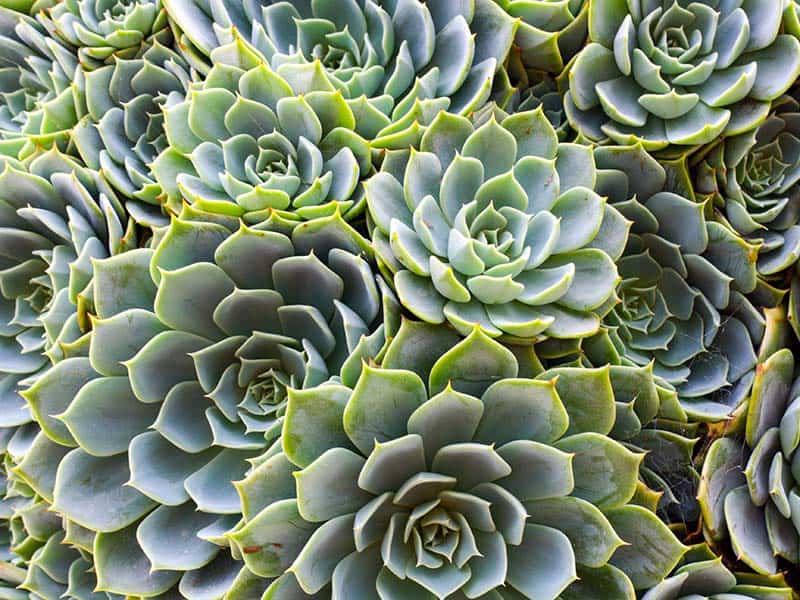
Unfortunately, White Mexican Roses are in danger of extinction. Its origins are from Mexico. Cacti lovers enjoy this plant due to the exotic touch that it brings to the garden. Many also call it “Alabaster Rose” because of its remarkable resemblance to the stone color.
It has thick and oval leaves and grows directly from the ground. White Mexican Rose blooms in Spring, converting into a beautiful plant with pink and yellow clusters. Learn how to care about White Mexican Rose!
#21 Golden Rat Tail (Cleistocactus Winteri)
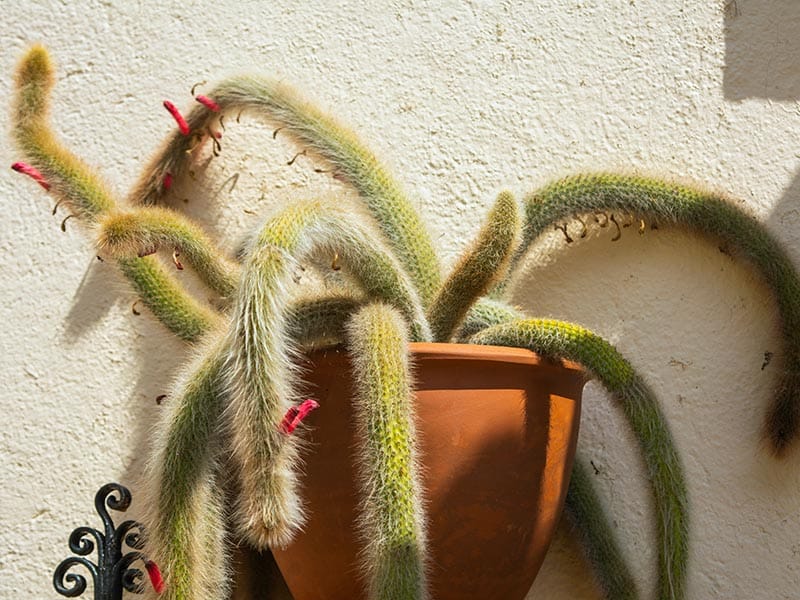
Golden Rat Tail comes from South America, but it’s also widely popular in many other parts of the world. It usually grows in rocky or flat areas with perennial vegetation.
Many people know Golden Rat Tail as a “hanging cactus” because it’s cultivated in that way. But, many others also use it to cover large areas. Learn more about Golden Rat Tail!
A beginner’s guide for Growing Golden Rat Tail.
#22 Bilberry Cactus (Myrtillocactus Geometrizans)
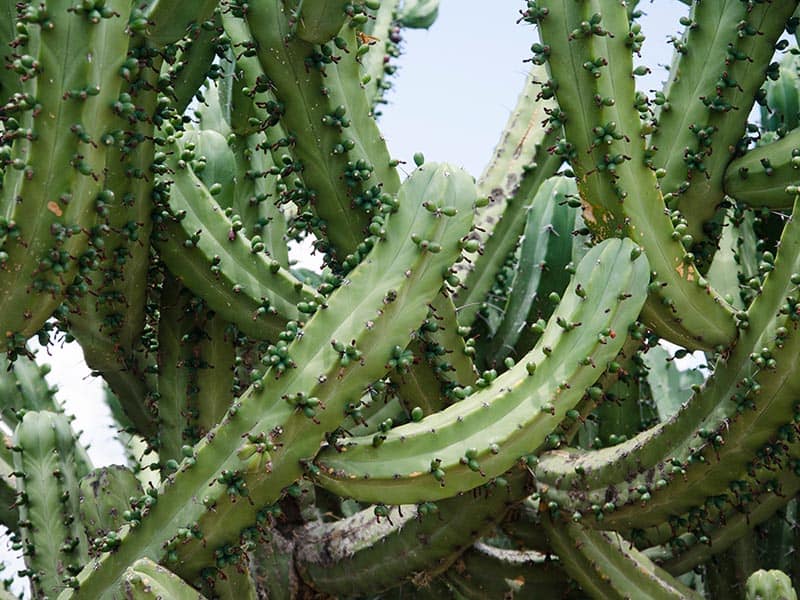
The Bilberry Cactus is another type of large indoor cactus that can grow up to 4 meters in height! Yet, it’s possible to grow in a pot indoors if you properly care so that it won’t grow that high.
It is also a plant that can grow pretty slow. The fruits of this tree are known as “Garambullos” in Mexico, and you can even consume them fresh. It is known that fruits are beneficial nutrients for people’s health. Follow these tips to grow a healthy Bilberry!
#23 Lamb’s Tail Cactus (Echinocereus Schmollii)
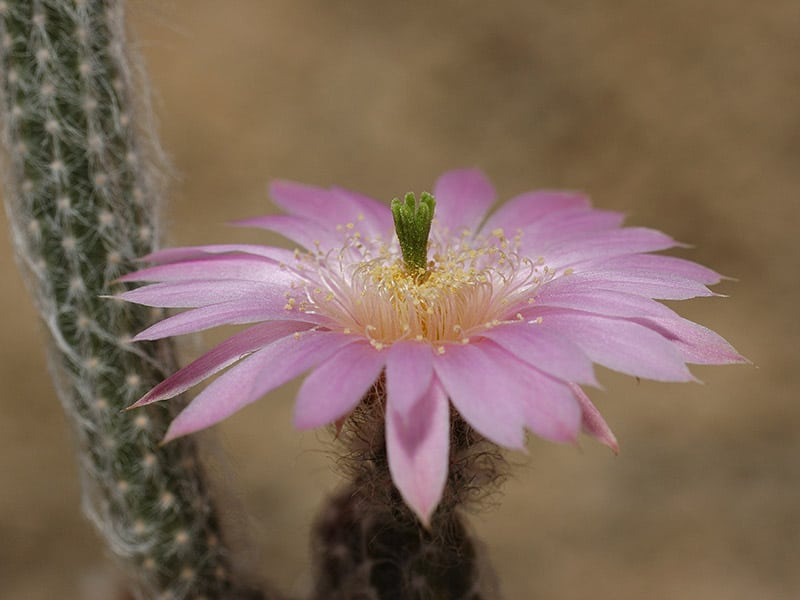
Lamb’s Tail Cactus or Donkey’s Tail has its origin from Queretaro, Mexico. The plant is quite similar to Echinocereus Poselgeri, and it’s a fast-growing plant. The most important thing is that it doesn’t require a lot of care!
Echinocereus Schmollii can tolerate both: high temperatures and low temperatures. The plant blooms in Spring, and amongst all plants indoors, it will be the first one to shine. Learn about growing and caring for Lamb’s Tail Cactus!
#24 African Milk Tree (Euphorbia Trigona)
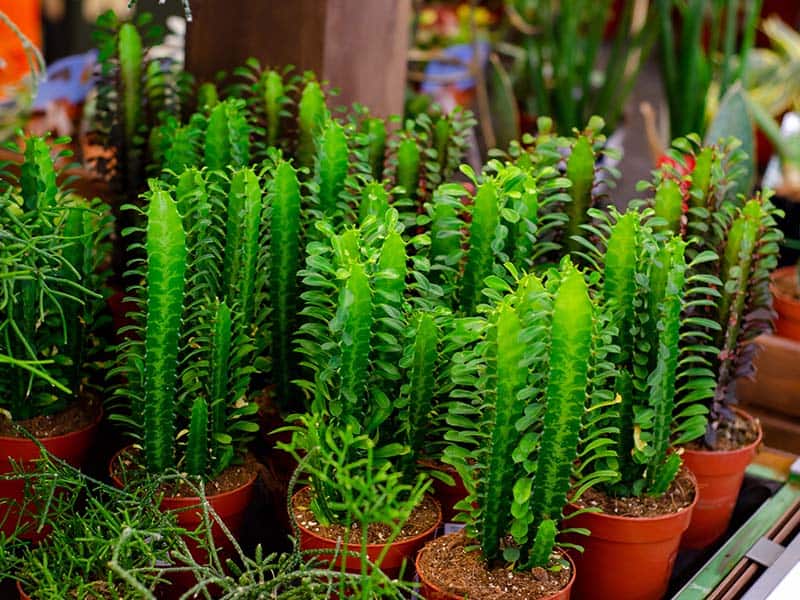
African Milk Tree is a type of large cactus that tolerates warm and hot places. You can place your cactus in an area with a lot of lighting. Yet, don’t forget to protect it from direct sun exposure because the sun’s rays can create burns and spots on the leaves and lead the plant to the process of decay.
I advise you to place the African Milk inside if you already have put it outside. It requires a lot of brightness where the sun’s rays won’t reach it. If you want to grow it outdoors, look for a semi-shaded place to protect it from burns. Learn more about the conditions Euphorbia Trigona requires!
#25 Lifesaver Cactus (Huernia Zebrina)
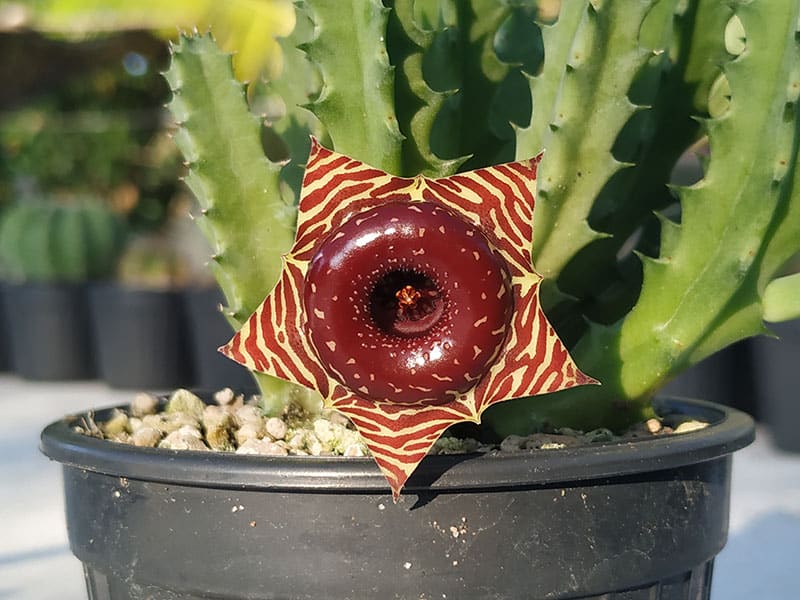
The Huernia Zebrina cactus has pretty large flowers. It comes with many genotypes and varieties, but this cactus itself is more prevalent amongst cactus collectors. This fantastic plant originates from South Africa, from nutrient-poor areas but consists of pretty mineral substrates.
Growing and caring for this plant it’s not difficult, but there are a few things to consider. Discover why the Lifesaver Cactus is so special and how to grow it!
#26 Moon Cactus (Gymnocalycium Mihanovichii)
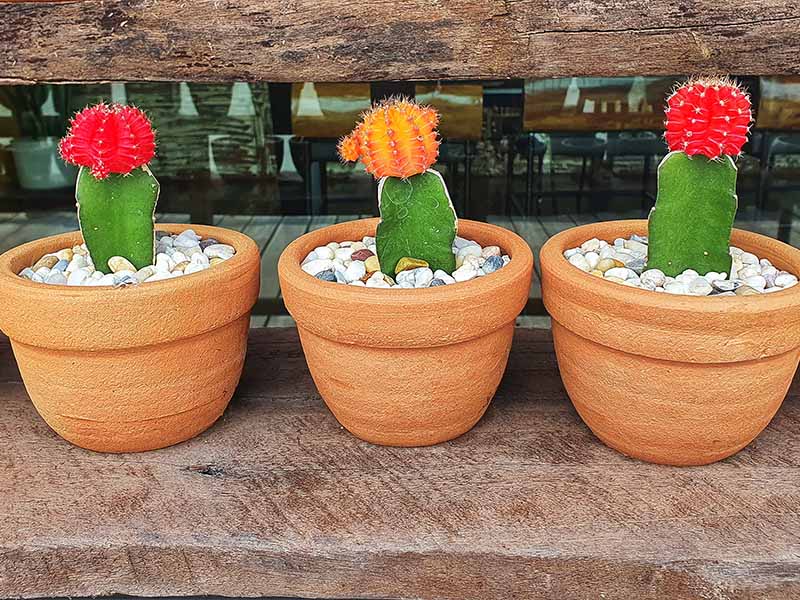
Moon Cactus belongs to the Cactaceae family, and it’s also part of many people’s collections. Its origin is from South America, but the value of this cactus is well-known around the globe.
Due to the significant mutations of the Moon Cactus, it comes in purple, yellow, red, and orange color. Choose your favorite color and learn how to properly care for Moon Cactus!
Growing Moon Cactus seems complicated,not impossible.
#27 Pencil Cactus (Euphorbia Tirucalli)
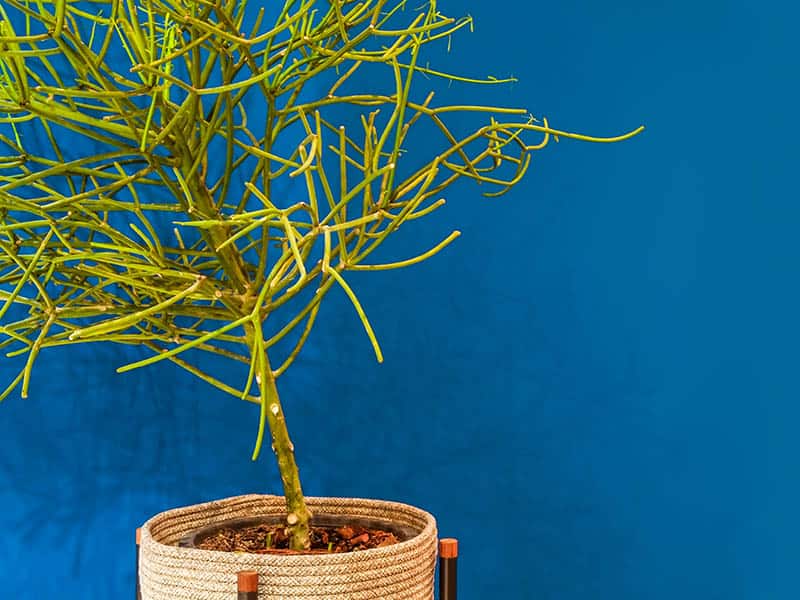
Pencil Cactus or Euphorbia Tirucalli is part of the euphoria family and is native to tropical areas. It can reach up to four meters altitude, although there are also species that have reached fifteen meters high. Its branches are fragile and thin.
Regarding growing it, it is enough to let dry the surface layer of the substratum. It’s not just the usual cactus plant, but it also brings some drawbacks when growing indoors. Discover why Pencil Cactus can be dangerous!
Choose Your Favorite Cactus
Although there are types of large indoor cacti that can be dangerous, many of them are special and easy to care for. They can survive in places where other plants wouldn’t. You can choose from a variety of forms and place them in your living room as the most unique decoration.
Its decorative ability is the reason why potted cacti have become so popular recently. If you find this article useful, don’t forget to like it and share it with your audience!

